The Reading Chair
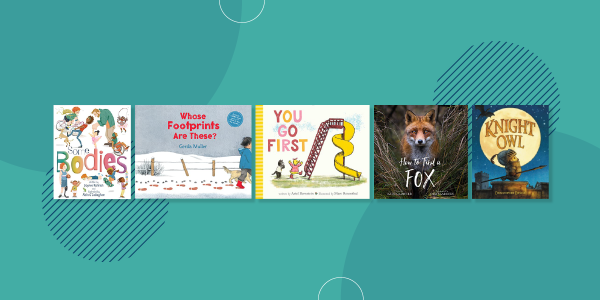
You are here
It’s fall and the beginning of a new school year. This season of new beginnings brings possibility and change for young children and early childhood educators alike. In this edition of the Reading Chair, we feature books that nourish a sense of discovery and adventure. Young children will enjoy discovering more about the human body in Some Bodies. Teachers can use How to Find a Fox, Knight Owl, and Whose Footprints Are These? to nurture children’s curiosity and sense of adventure. All of these titles invite readers on an adventure, either through nature, an imaginative story, or in the pursuit of the solution to a mystery. You Go First can help children navigate their feelings about change and discovering something new—whether excitement, anxiety, or both.
– Isabel Baker and Miriam Baker Schiffer
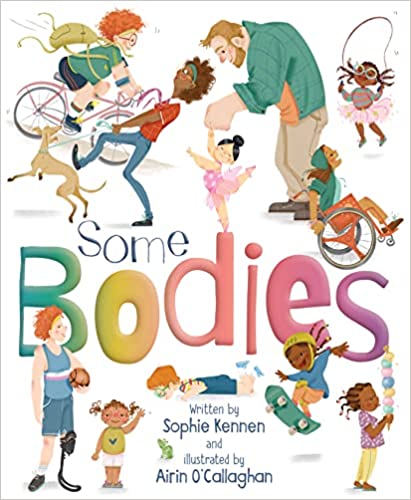 Some Bodies
Some Bodies
By Sophie Kennen. Illus. by Airin O’Callaghan. 2022.
Ann Arbor, MI: Sleeping Bear Press. 32 pp. Ages 2 to 6.
Children love getting to know their bodies. This rhyming book provides a nice introduction to the notions that our bodies are varied and each is special. It celebrates height and weight differences, prosthetics, eyeglasses, wheelchairs, curly hair, and variations in skin tone, including freckles and vitiligo. It acknowledges people’s different preferences, needs, and traditions related to dress—some may cover more of their skin or wear a wig, for example. And it affirms that some may choose to alter their bodies, making changes such as adding tattoos. Upbeat illustrations give readers lots to look at. Teachers can use this body-positive book to start a conversation on what makes children proud about their own bodies.
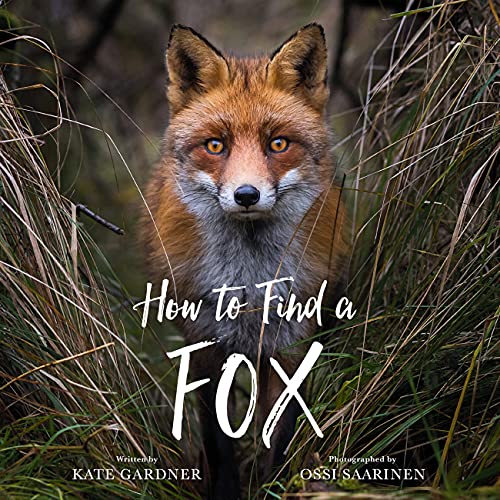 How to Find a Fox
How to Find a Fox
By Kate Gardner. Photographs by Ossi Saarinen. 2021.
New York: Running Press Kids. 40 pp. Ages 2 to 7.
Foxes are commonly anthropomorphized in children’s literature, taking on popular roles in books such as Fantastic Mr. Fox, by Roald Dahl, or My Lucky Day, by Keiko Kasza. But they seem to be elusive in real life. This photo-illustrated book embraces the mystery of finding a fox with playful language, interesting scientific details, and stunning photographs of foxes and their habitats.
The book begins, “If you want to find a fox,” letting readers know they’re embarking on an adventure. Then, it offers tips on habitats, times of day, seasons, tracks, and sounds to consider when trying to find them. Sparse text on each page flows poetically. Smaller print offers additional details for older readers. Children may enjoy the photographer’s note at the back of the book explaining how he managed to encounter these beautiful creatures. This book can inspire discussions of children’s favorite animals or new animals they’ve discovered and how they might be found in the wild.
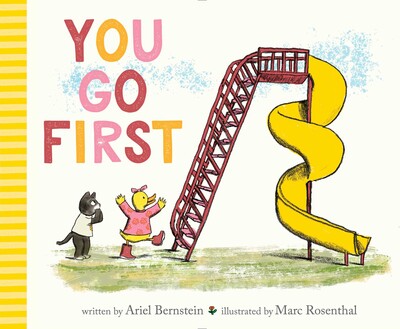 You Go First
You Go First
By Ariel Bernstein. Illus. by Marc Rosenthal. 2023.
New York: Simon & Schuster Books for Young Readers. 48 pp. Ages 3 to 6.
When two friends, Duck and Cat, go to their usual playground, they notice a change. The old slide has been replaced with a new, larger one. A swirly, steep one. Duck is delighted! Duck can’t wait to try the slide. But Cat? Not so much. Cat is afraid and tries quite a few delay tactics to keep them off of it, which will have readers chuckling. But when Cat realizes that those fears are keeping Duck from trying something special, Cat digs deep and finds a burst of bravery.
This sweet story is well-paced and full of charm. The illustrations were penciled by hand and have a refreshing homespun quality and very relatable facial expressions. Children will love talking about each character’s feelings, the silly ways Cat tries to avoid the slide, and why Cat ultimately takes a big risk. This book provides good jumping-off points for children to reflect on their own fears and bravery.
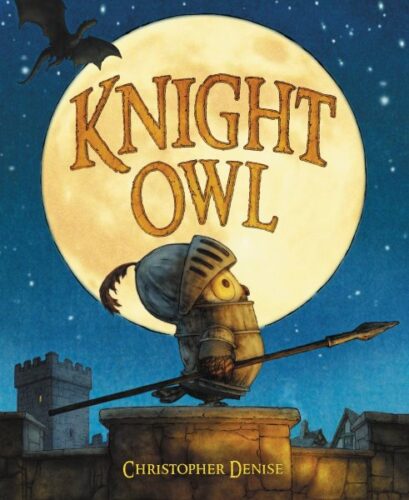 Knight Owl
Knight Owl
By Christopher Denise. 2022.
New York: Christy Ottaviano Books. 48 pp. Ages 3 to 7.
Little Owl had always dreamed of being a knight, but no one imagined the young bird had it in him. Then, when knights start mysteriously disappearing from the castle, Owl is called to serve. His nocturnal ways—which are why he is always falling asleep during his daytime classes—help him unravel the mystery and save the day.
Owl’s journey to knighthood has all the hallmarks of a good story: an underdog main character, a slightly scary problem, good tension, and a satisfying resolution. Denise’s illustrations—which earned the book a Caldecott Honor—are brilliant, dark as night but with flashes of light that draw the eye. Owl’s small stature among the large knights and his big, bright, wary eyes demonstrate his vulnerability. His stout little body weighed down by heavy armor has a wobble reminiscent of a puppy’s, and readers know from the get-go that there is lightheartedness to this gripping tale. Children will love rooting for Owl and imagining being brave themselves. And they’ll enjoy this book again and again.
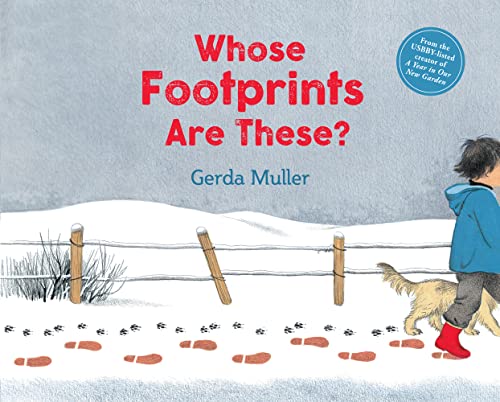 Whose Footprints Are These?
Whose Footprints Are These?
By Gerda Muller. 2022.
Edinburgh: Floris Books. 36 pp. Ages 4 to 7.
A wordless book is a wonderful vehicle for encouraging children to pore over the illustrations and surmise what might be happening in a story. This wordless book has an extra twist. The characters are nowhere to be seen. Instead, footprints provide the clues to who, what, and where. Observant readers will deduce that a child and his dog head out into the snow for a morning romp after breakfast, where they bump into an adult refilling the firewood pile. Playful details abound (a hiking stick is one of the items readers can track, and children may recognize that meals have been served and eaten without seeing anything but footsteps). A glimpse of a child and dog at the end provides satisfaction. The illustrations, which are made of gouache and colored pencil, are simple and clear while also providing a colorful warmth. Young readers will enjoy honing their detective skills and recognizing the everyday routines this family engages in.
Copyright © 2023 by the National Association for the Education of Young Children. See Permissions and Reprints online at NAEYC.org/resources/permissions.
Isabel Baker, MAT, MLS, is the founding director of The Book Vine for Children, a national company dedicated to getting good books into the hands of preschool children and their teachers. Isabel has worked as a children’s librarian and is currently a presenter on early literacy and book selection.
Miriam Baker Schiffer, MFA, is a writer in Brooklyn, New York. She consults on book selections for The Book Vine, in McHenry, Illinois. Miriam’s children’s book, Stella Brings the Family, was published by Chronicle Books in 2015.